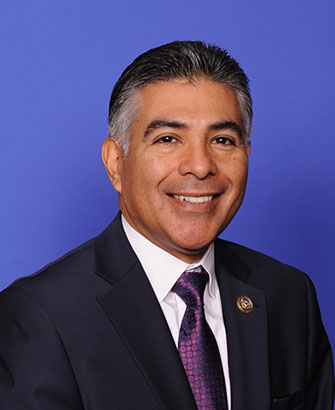An Orange County jury Tuesday handed down a $1.5 million verdict for a father and sister who were wrongly told by officials with the Orange County Sheriff’s Department that a family member had died.
Jurors, who deliberated for about three hours, awarded $1.1 million for the father of Frankie Kerrigan and $400,000 for his sister. The family’s attorney had argued for $3 million each for the father and sister.
“This has been an injustice to our family from the very beginning,” the father, Frank Kerrigan, said. “We have fought this legal fight for five years and we are grateful to the Orange County jurors who recognized the injustice. We are hopeful this verdict sends a message so this never happens to any family anywhere.”
The family’s attorney, Jim DeSimone, told City News Service, “First of all, we’re very grateful the jury made this decision in less than three hours time so it seems that we did prove our case overwhelmingly in court and the jury agreed with us.”
DeSimone added, “The Kerrigan family feels vindicated and thankful that the story was told and the jury found in their favor. They truly hope the verdict does send a message both to Orange County and other governmental agencies that they need to show care and concern with anyone who has a Frankie or somebody mentally ill and on the streets. You should do your due diligence and do your job in terms of communicating with a family, and especially when it’s to let them know a family member is dead.”
DeSimone said the family was wrongly told by deputies in the coroner’s office that the body was identified by sight and by fingerprints, both of which were untrue.
“They put this family through unbelievable trauma,” DeSimone said. “They should have compensated the family five years ago.”
Efforts to reach attorneys for the county were unsuccessful.
The family members of Frankie Kerrigan alleged intentional and negligent misrepresentation. Orange County Sheriff-Coroner officials wrongly informed Kerrigan’s family that he was found dead outside a Verizon store in Fountain Valley, but 17 days later Kerrigan showed up for a visit with a family friend, who had attended Kerrigan’s funeral at Holy Family Cathedral in Orange.
It turned out the transient found dead outside the store on May 6, 2017, was 54-year-old John Dean Dickens. An officer who found the body believed it was Kerrigan, so deputy coroner David Ralsten printed off a copy of Kerrigan’s state identification and concluded it was the same person, DeSimone told jurors.
The identification, however, was about 11 or 12 years old, DeSimone said.
That afternoon, Riverside County sheriff’s deputies left a note for Kerrigan’s father, Francis Kerrigan, to call the Orange County Sheriff-Coroner’s Department. An official with the coroner’s office in Orange County informed Kerrigan that his son was found dead. Fingerprint scans were sent that day to law enforcement databases, so the identification was not confirmed, DeSimone said.
In the meantime, the family held a funeral Mass on May 16 and the body was buried at Holy Sepulcher Cemetery near Kerrigan’s mother.
Ralsten went on vacation, and while he was away there was a match on the fingerprints and it was Dickens, but no one in the office picked up on the computer message, DeSimone said.
The family friend, who served as a pallbearer at the open-casket funeral, called the Kerrigans on May 23 to tell them Frankie Kerrigan was still alive. The family notified Orange County sheriff’s officials days later, and on June 1, 2017, the coroner’s office informed the Kerrigan family that the dead person was Dickens.
The body was exhumed Aug. 23, 2017. Dickens’ sister told City News Service the family could not afford to have the body shipped to them so they had to opt for cremation, which the coroner’s office did not charge them for.
DeSimone said Frankie Kerrigan’s sister, Carole Meikle, was told authorities found identification on the body, which was not true. When the fingerprint scans came back to the coroner’s office “they misconstrued” the information, DeSimone said.
“When you’re dealing in matters of life and death — it’s important to get it right,” DeSimone said.
“Without bothering to check the fingerprints (Ralsten) sets in motion contacting the Kerrigan family,” he added.
The family was surprised to hear Kerrigan died because they had just spoke to him on the phone a couple of days before and he seemed fine, DeSimone said. Kerrigan has been diagnosed with schizophrenia and bipolar disorder, DeSimone said. But he was otherwise in good health physically.
At the time, the coroner’s office had been using a LiveScan system that was new and Ralsten wasn’t trained on how to use it, DeSimone said.
The family decided to “go public” with the story when they learned the truth, and three days later the coroner’s office issued a public apology, DeSimone said.
Norm Watkins, who represents the county, said the sheriff’s deputies “would never engage in a cover-up of a mistake and they will each tell you that.”
“My client never made a secret of the mistake that caused the Kerrigan family to believe their son was dead,” Watkins said. “That mistake seems pretty simple in retrospect.”
The LiveScan system “probably had been in use for six months” in Orange County, Watkins said. “It probably wasn’t fully understood.”
Not only wasn’t Ralsten trained how to use it the use of that computer system wasn’t even within his work assignment, Watkins said.
When Ralsten returned from his vacation he saw only one return on the request for a match on the fingerprints and it said “no hit,” Watkins said. He was unaware there were three other reports in the system indicating they had misidentified the body, Watkins said.
When the family called Ralsten to say Kerrigan had shown up alive he asked them to confirm they had an open-casket funeral, because he knew the body had been embalmed, Watkins said.
Watkins called it a case of “confirmation bias” from everyone involved. “It was an honest mistake,” he said. “No one realized Frankie Kerrigan wasn’t the decedent. The only one that did was the little old computer.”
When the family found out Kerrigan was sill alive, “They didn’t tell anyone about this for six days,” Watkins said.
And when the family went public with what happened it became an international story with false allegations the county attempted to cover it up, Watkins said.
“Yes, there was a period of 10 days when Mr. Kerrigan was presumed to be deceased,” Watkins said. “But the county publicly apologized to the family.”







